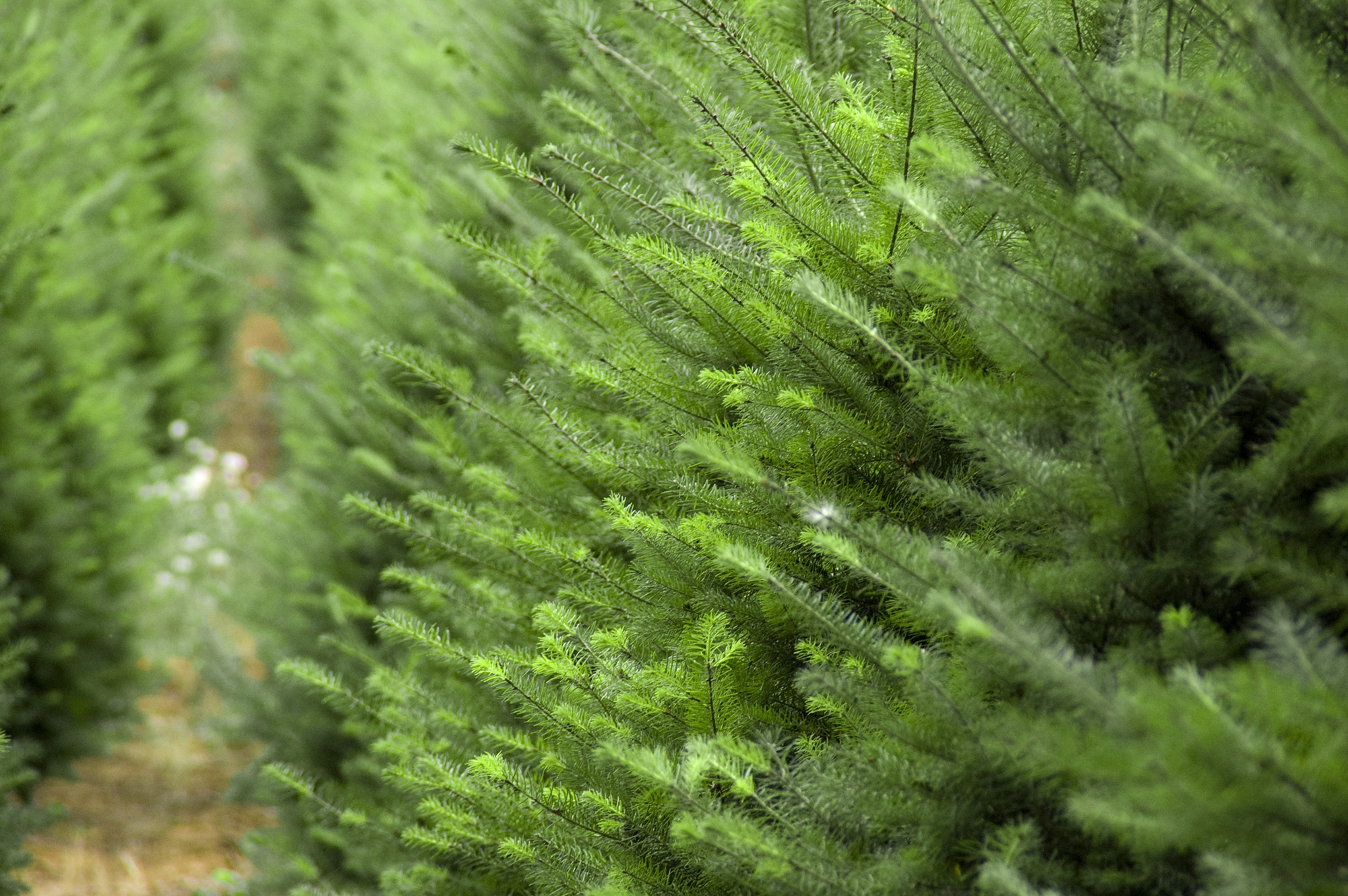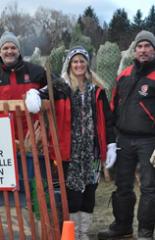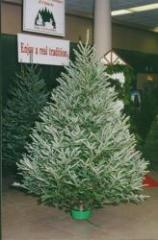
The Environmental Choice - Real Christmas Trees



Originally, the family Christmas tree came from the forest. However, Ontario Christmas trees are now exclusively farm-grown as a renewable, sustainable agricultural crop, specifically to help celebrate the Christmas season. When families take home a farm grown Christmas tree, they know they are not harming naturally occurring forest resources. During their growth period of seven to fifteen years, real Christmas trees provide many environmental and ecological benefits. These include erosion control, wildlife habitat, oxygen production, and carbon dioxide and other pollutant removal. Christmas tree farmers follow sound land stewardship practices. Their commitment to both their local and global environmental and ecological issues is an underlying philosophy. The members of the Christmas Tree Farmers of Ontario are proud to support environmental awareness and present this information for your reference and use. And if you're wondering just what you, as an individual, can accomplish; think about the insignificant single snowflake and what happens when multitudes of them get together! Caring about and for, our environment starts with each and every one of us making small, steady changes.
A Few Environmental Questions: What is an ECOSYSTEM? An ecosystem is an area is which different varieities of species/organisms interact with each other and are dependent on each other for survival. An ecosystem may be very small; however each ecosystem will also be dependent on other ecosystems and ultimately, our earth can be considered an ecosystem. Whatever negatively impacts the smallest ecosystem will eventually impact the largest - our earth. What is GROUNDWATER? Groundwater is water that is found underground, rather than surface water, such as a lake. Groundwater is usually pure due to the natural filtration that takes place as the water moves through underground rock structures. Surface water can more easily become polluted. Groundwater can become polluted if surface pollution finds its way to a groundwater supply. Polluted groundwater is extremely difficult to clean up due to its inaccessibility. What is GLOBAL WARMING? Global warming is the gradual increase in the average air temperature. Increased temperatures may cause the melting of polar ice caps, changes in water levels, altered weather patterns, such as increased/decreased rainfall, and significant weather dispruptions. Scientists are not yet in total agreement regarding the possible hazards of global warming. The primary contributors to global warming are methane and carbon dioxide, referred to as greenhouse gases. These gases keep warm air near the earth and prevent it from escaping into the upper atmosphere. Burning fossil fuels, such as gas, oil and coal, releases carbon monoxide. What is ACID RAIN? Normal rain drops are about 5.6 on the pH scale*. Rain with a level below 5.3 is acidic and called "acid rain". Acid rain contains sulphuric acid and nitric acid, formed from sulphur dioxide and nitrogen oxide. Sulphur dioxide and nitrogen oxide are emissions from coal generation, ore smelters, steel mills and vehicle exhaust. Acid rain alters the healthy pH level of lakes and waterways, causing the death of small organisms, in turn destroying the food source of successively larger aquatic species. In addition, the acid rainfall can negatively impact vegetation, reducing plant health and making trees more susceptible to disease and pests. It can damage buildings and outdoor sculptures or other artworks. It may also contribute to respiratory ailments. *PH is a measure of the degree of acidity or alkalinity in a substance. Water, soil, body fluids and many other substances have varying pH levels. Different living organisms require varying pH levels for optimum health and even life. What is HAZARDOUS WASTE? A hazardous waste is a substance or item that may contain compounds that cause serious contamination/damage/illness to living beings. This includes items such as motor oil, solvents, chemicals, medications, petroleum products and more. Hazardous wastes must be prevented from getting into sewer/water treatment systems. Hazardous wastes and the containers used to store wastes, should not be buried as this can cause soil and groundwater contamination. Disposal should be done through a hazardous waste disposal station. Contact your municipality or the Provincial Hazardous Waste Management office. Do not include hazardous materials with regular garbage. Is it okay to put things into a SEWER GRATE? No! Sewer grates are also called storm drains and they are intended to carry excess rainwater or melting snow away from streets. Water that goes into these drains usually goes into local streams, creeks or lakes without receiving any treatment or clean-up. Whatever goes into the drain will end up in your water - the same stuff you use for brushing your teeth, showering, cooking, drinking and swimming in. Why are TREES and FORESTS IMPORTANT? Trees and other living plants perform photosynthesis. In this process, carbon dioxide is absorbed from the air and oxygen is produced. Purified water is released into the air through transpiration. Trees act as air pollution filters, and can remove tons of airborne pollutants per acre per year. Trees provide homes and resting places for birds, small animals and many beneficial insects. The root structure of trees, shrubs and grasses helps to stabilize soil and prevent erosion and flooding. In urban areas, because of hard surfaces, such as sidewalks, roads, parking lots and buildings, that absorb and retain heat, air temperatures may be up to 10 degrees warmer than in surrounding areas. Trees help to cool the air, filter pollutants and provide oxygen. Some urban municipalities encourage "green roofs". Roof top plantings to provide the environmental benefits of green plants Does having a real Christmas tree harm the ENVIRONMENT? No! Ontario Christmas trees are exclusively farm-grown as a renewable, sustainable agricultural crop. About one million Ontario families enjoy a real Christmas tree each year. Each year two to three new Christmas tree seedlings are planted to replace each harvested tree - which means that Ontario Christmas tree farmers plant close to 3 million seedlings annually! Because a Christmas tree takes between 7 and 15 years to reach harvest size, the farmer must plan far in advance to ensure a sustainable harvest each year. A Christmas tree farmer will therefore always have trees at eight to ten different stages of growth. While these trees are growing they provide many environmental benefits. Real Christmas trees improve the air we breathe, the water we drink and the sights and sounds of the world around us. They help to control the effects of climatic conditions and provide a habitat for a variety of birds and small animals. Christmas trees are harvested at the peak of their healthy growing years. If these trees were left unharvested, they would soon decline in health, becoming host to a variety of harmful insects and diseases. Many Christmas tree farms utilize shallow sandy soils and other lands not suitable for agricultural food crops. Christmas trees often occupy corners and odd parcels of land which might otherwise lie fallow and be subject to erosion. Real Christmas trees are a natural, biodegradable, non-polluting and environmentally friendly product.. The information presented here is intended for your reference and use. It does not in any way represent a complete or comprehensive environmental/ ecological/recycling guide. Your comments and contributions are welcome.
The information presented here is intended for your reference and use. It does not in any way represent a complete or comprehensive environmental/ ecological/recycling guide. Your comments and contributions are welcome.
The information presented here is intended for your reference and use. It diees not in any way represent a complete or comprehensive environmental/ecological/recycling guide. You comments and contibutions are welcome. Bibliography : CTFO Teacher's Guide/Education Kit www.greenchallenge.com
 Contact the CTFO office via convenient online email form, phone, fax, or mail...More info..
Contact the CTFO office via convenient online email form, phone, fax, or mail...More info..
 How to take good care of your Christmas Tree:More info..
How to take good care of your Christmas Tree:More info..